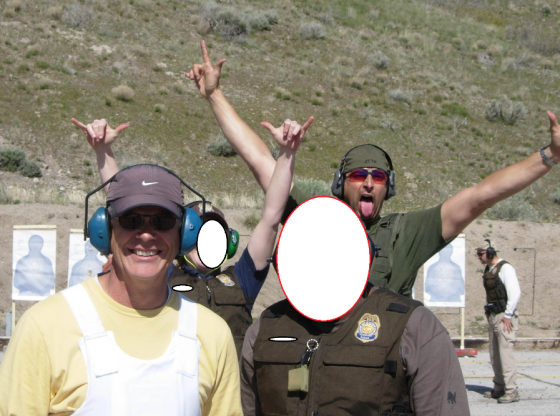“…the owners of street-legal OHVs comply with numerous laws and regulations to be given the privilege to drive on a wide range of state and county roads. They also contribute to the maintenance of the state highway system through gasoline taxes and registration fees.”
Letter written by Utah State Representative, Phil Lyman (District #73), to Secretary of the Interior, David Bernhardt
Dear Secretary Bernhardt,
On July 29, 2019, leading advocates for OHV access in the state of Utah sent you a letter discussing their concerns with the National Park Service’s (NPS) current prohibition of OHV access in Utah’s five national parks. I am the representative of District #73 in the Utah State Legislature, and my district contains Bryce Canyon National Park, Canyonlands National Park, and Capitol Reef National Park. Arches National Park and Zion National Park are so close to my district that the management of these parks dramatically influences the constituents, the communities, and the economy of my district. I am writing to share my support for the effort to open Utah’s five National Parks for street-legal OHV access.
In addition to the serious concerns raised in the letter sent to you on July 29, I would like to include some additional perspective from the Utah State Legislature, which I believe adds additional justification for removing this ban on street-legal OHVs in Utah’s National Parks.
First, with the exception of the Kolob Canyon entrance to Zion National Park, Utah’s National Parks are accessed by state highways and county roads. Utah taxpayers fund the construction and maintenance of these roads. In some cases, as with Highway 24 that passes through Capitol Reef National Park, the road is managed by the state of Utah even though it passes through the National Park. In Utah, almost all National Park visitation is made by vehicle. The Utah Legislature has been a leader in allowing certain types of OHVs to be registered as street-legal. To qualify, the machines need to be modified to meet safety standards, they have to be registered, the drivers have to be insured. In short, the owners of street-legal OHVs comply with numerous laws and regulations to be given the privilege to drive on a wide range of state and county roads. They also contribute to the maintenance of the state highway system through gasoline taxes and registration fees.
It offends me that even though we have given the owners of street-legal OHVs the legal right to drive on Utah’s roads, that the National Park Service has adopted regulations that discriminate against OHV owners. The justifications used for implementing these bans do not make sense, and the prohibitions can only be enforced through means that are arbitrary and capricious. The letter sent on July 29 points out the shortcomings of these regulations, and I look forward to being copied on any response that addresses the shortcoming raised by the July 29 letter.
In addition to subsidizing access to National Parks through the maintenance of the state highway system, the State of Utah has spent millions of dollars promoting the Mighty 5 campaign through the Governor’s Office of Economic Development. The campaign has been an incredible success in increasing visitation levels to the parks. Despite this success, it is frustrating to see such large amounts of state resources being used to promote federal parks that discriminate against such a large group of users who would like to access the parks.
I intend to get as many elected officials in Utah to sign this letter. In addition to their support and on behalf of Utah Legislative District 73, I ask that the National Park Service withdraw its prohibition of street-legal OHVs in National Parks – especially the National Parks within the state of Utah. Several parks in the system (e.g. Yellowstone National Park and North Rim of the Grand Canyon) have already come to the conclusion that allowing street-legal OHVs is consistent with protecting resources and values of National Parks.
Utah is a sovereign state, and the government of the State of Utah is capable of passing and enforcing laws that govern traffic and the use of vehicles. 36 CFR 4.2 already provides all the authority NPS needs to withdraw this prohibition. Because of the reasons identified in this letter, a regulatory prohibition at each specific park above and beyond the protections afforded by 36 CFR 4.2 is unnecessary and can only be justified by reasons that are discriminatory, arbitrary and capricious.
Because this prohibition is not justified it should be withdrawn through the same process used to put the prohibition into effect. It should not be necessary to follow the process outlined in National Park Service Management Policies (2006) at 8.1.12. This could also be done through the same kind of Secretarial Order that was used to recently permit e-bikes in National Parks.
I look forward to your response to our concerns.

Free Range Report
Thank you for reading our latest report, but before you go…
Our loyalty is to the truth and to YOU, our readers!
We respect your reading experience, and have refrained from putting up a paywall and obnoxious advertisements, which means that we get by on small donations from people like you. We’re not asking for much, but any amount that you can give goes a long way to securing a better future for the people who make America great.
[paypal_donation_button]
For as little as $1 you can support Free Range Report, and it takes only a moment.



